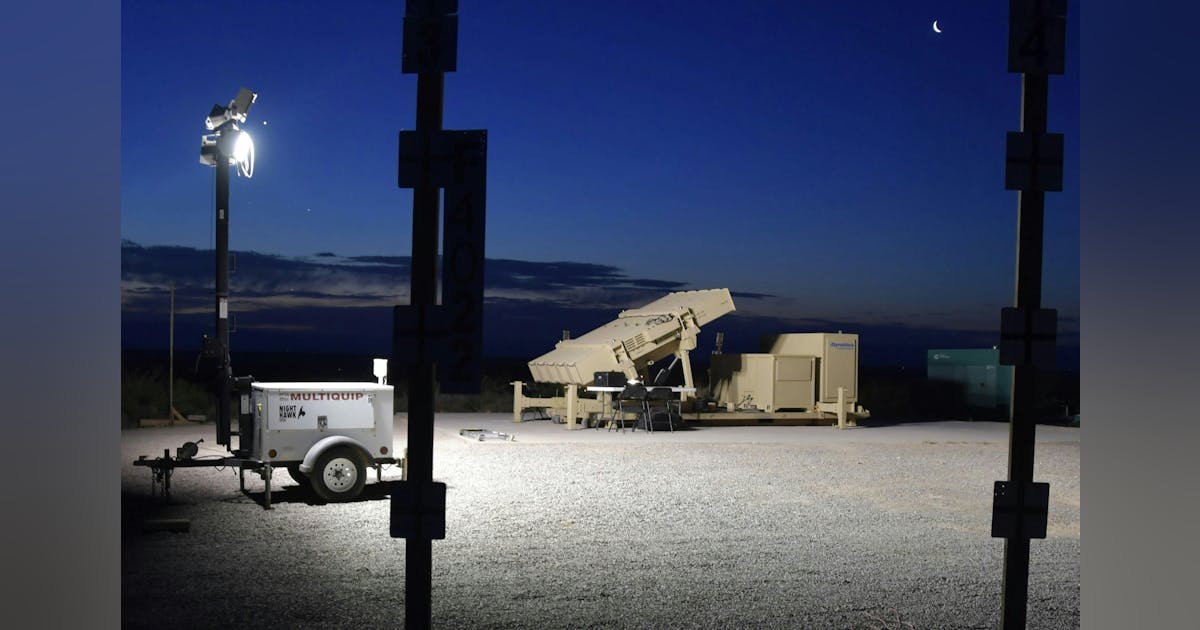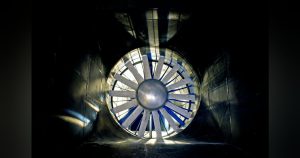Dynetics, a Leidos company, is leading a transformative effort in U.S. Army air defense by incorporating laser weapons and high-power microwaves into the Indirect Fire Protection Capability (IFPC) system. This integration is set to redefine how the Army neutralizes threats from drones, missiles, rockets, and artillery.
Why Are Lasers and High-Power Microwaves Game-Changers?
Laser weapons offer a quick, precise, and cost-efficient method to disable aerial threats by physically damaging them. They can burn holes through drones or detonate warheads before they reach their targets. A significant advantage is their virtually endless “magazine,” meaning there’s minimal risk of running out of ammunition during prolonged defense.
High-power microwaves (HPMs) incapacitate threats differently by disrupting the electronics and communications of drones, rockets, and vehicles. For example, an HPM blast can disable all electronics in a group of enemy drones almost instantaneously, effectively countering masses of low-cost airborne threats.
What Is the IFPC, and Why Does the Army Need It?
The Indirect Fire Protection Capability (IFPC) aims to protect critical military assets from the significant and increasing threats posed by drones, cruise missiles, artillery, and rockets. Its unique “layered” approach allows it to mix traditional missiles, new interceptors, and cutting-edge directed energy weapons, like lasers and microwaves, to adapt to ever-evolving threats.
Key Goals of the IFPC System:
- Counter large-scale drone attacks and rapidly emerging airborne threats
- Safeguard vital infrastructure such as bases, radar installations, and command posts
- Deliver swift and cost-effective responses, particularly when traditional interceptors might be too costly or slow
Dynetics: Expertise, Experience, and a Human Touch
With a strong foundation in advanced engineering and battlefield systems, Dynetics is an established player in developing directed energy technologies. In collaboration with Lockheed Martin, it has driven the High Energy Laser Tactical Vehicle Demonstrator (HEL TVD) project—featuring a truck-mounted, 100-kilowatt-class laser weapon tested under tough conditions. Ronnie Chronister, a senior vice president at Dynetics, describes it as “a safe and simple high-energy laser weapon system operable across diverse terrains.”
Fast Facts:
- Contract Scope: $264.6 million for continued IFPC development, with a completion target set for July 2026 across various locations in Alabama, Pennsylvania, and Minnesota.
- End-User Focus: Systems are engineered to be durable, reliable, and “soldier simple” for straightforward user adoption by the military.
- Defense Heritage: Dynetics (Leidos) harnesses decades of experience in directed energy, battlefield applications, and direct feedback from military personnel, ensuring its technology is futuristic but also functional and reliable.
Real-World Testing
Recent field trials at Fort Sill, Oklahoma, tested directed energy systems against swarms of hostile drones, validating the effectiveness of lasers and microwaves beyond the lab environment on actual battlefields.
Colonel Steven D. Gutierrez, Project Manager for Directed Energy in the RCCTO, highlighted these exercises as “the first of their kind,” focusing not only on technological breakthroughs but also on integrating policies, doctrines, training, and organizational structures to smoothly incorporate these innovations into Army operations.
Layered Defense: Why “Click Here to Upgrade Armor” Isn’t Enough
History shows that no singular weapon has maintained dominance indefinitely, from tanks replacing cavalry to being challenged by missiles and drones. The Army’s layered defense strategy combines the best of both kinetic (traditional weapons) and directed energy defenses to create a robust system:
- Lasers eliminate hard targets and intercept warheads.
- Microwaves dismantle electronics and neutralize swarms.
- Conventional missile interceptors act as a safety net for targets less susceptible to energy weapons.
This strategy not only enhances reliability but also addresses the “cost per shot” issue in warfare—downing a $500 drone with a million-dollar missile isn’t feasible. Conversely, a laser shot incurs costs similar to that of a cup of coffee.
What Makes This Exciting Beyond Tech Specs?
Speed, flexibility, and cost savings: Lasers and HPMs are almost immediate in response, can confront multiple threats, and significantly lower engagement costs, simplifying supply logistics while minimizing vulnerability to saturation attacks.
Adaptation to emerging threats: With battlefields increasingly populated with low-cost drones and rapid-fire artillery, directed energy allows the Army to stay adaptive and proactive against ever-evolving enemies.
A human touch: Engineers at Dynetics work closely with Army operators. Soldiers are actively testing these new systems in genuine scenarios, learning and advancing tactics, ensuring they are not merely “sci-fi tools” but ready for combat transformation.
Challenges and Next Steps
While high-energy lasers are deemed “mature” by Army officials and ready to scale up production pending Congressional funding approval, high-power microwaves lag slightly in operational readiness. Before HPMs are fielded broadly, further engineering and testing are essential to prove their effectiveness and dependability. Nonetheless, senior Army leaders remain hopeful and recognize the importance of demonstrating HPM technology’s feasibility.
In the future, the FY26 Enduring High Energy Laser program is anticipated to establish the Army’s first directed energy “program of record,” facilitating more extensive adoption and sustained investment.
Readers, Imagine This…
- A “Star Wars moment” on battlefields: lasers silently hitting incoming threats.
- HPMs rendering entire drone swarms inert with the flick of a switch.
- Deploying these systems on tactical military trucks to swiftly protect convoys and outposts as needed.
- Cost efficiency in defense, providing reassurance to taxpayers and military managers alike.
Cultural Context: From Sci-fi to Standard Issue
Lasers and directed energy weapons have transitioned from the realm of science fiction into reality, thanks to innovative efforts led by the U.S. Army, in concert with companies like Dynetics/Leidos. These “future weapons” are now operational components in military arsenals.
It is certainly satisfying—and distinctively American—to counter futuristic threats with technology inspired by Hollywood fantasies.
Final Thoughts—Building Trust, Driving the Mission
Leidos and Dynetics focus not only on crafting exciting new gadgets but also on protecting soldiers, securing critical infrastructure, and maintaining strategic superiority through teamwork, rigorous testing, and engineering brilliance.
These advancements transcend mere hardware innovation; they are about ensuring credible deterrence and empowering U.S. forces to meet future challenges with confidence.
Original Article: Original Article













